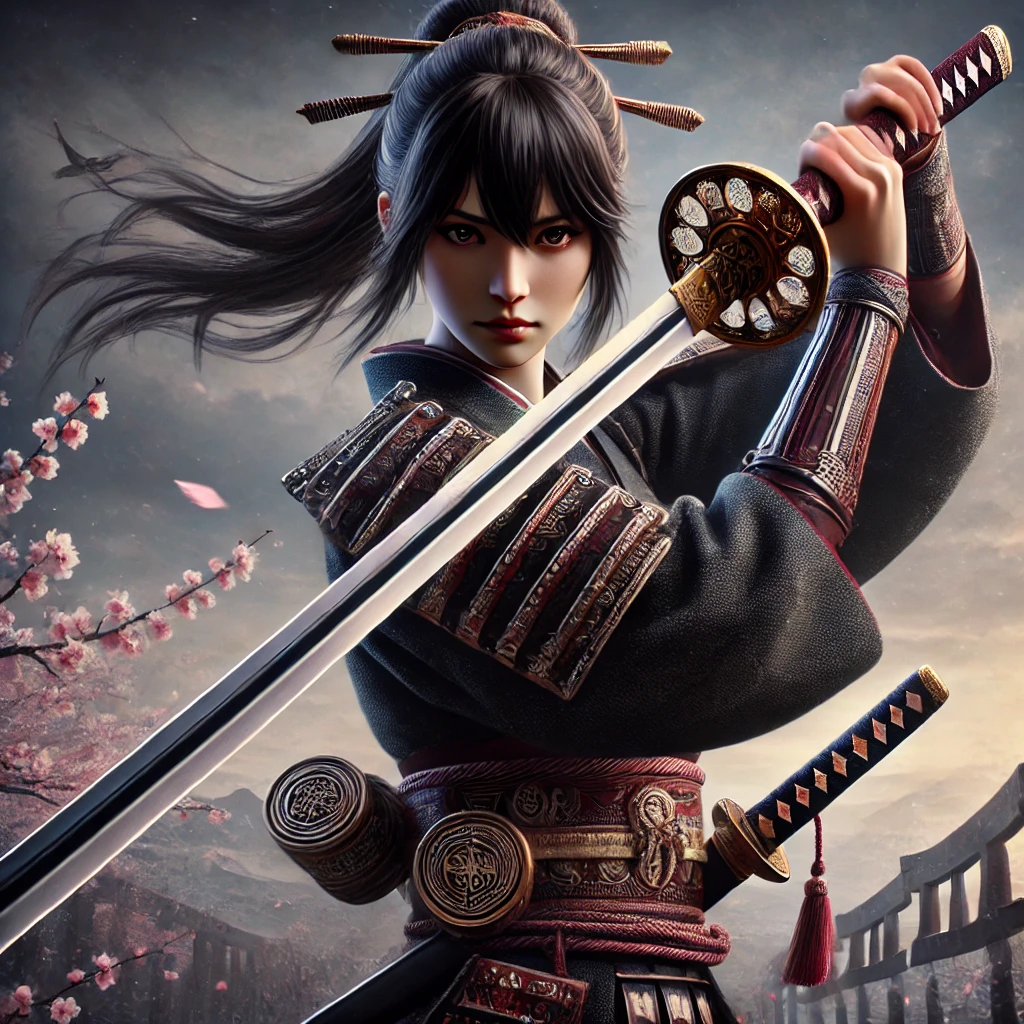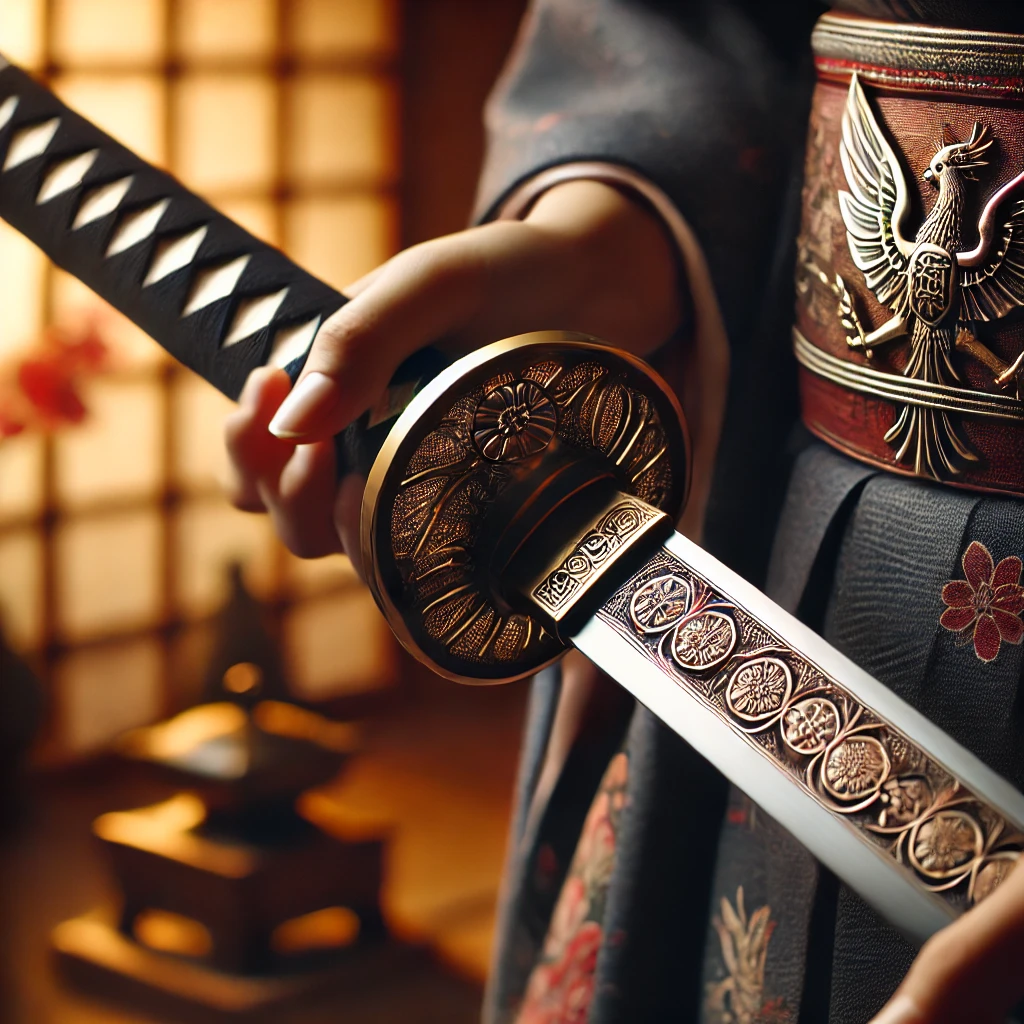Throughout history, the samurai have been closely associated with men. However, there were also female warriors who played significant roles in Japan’s history. These women, known as onna-bugeisha, were highly skilled in martial arts and weapons, including the katana sword. Although often forgotten, female samurai were as brave and skilled as their male counterparts. This article explores their roles, their use of the katana, and how katana customization played an essential part in their identity as warriors.

I. The Role of Onna-Bugeisha
The onna-bugeisha were female warriors who belonged to the samurai class. These women often fought in defense of their homes or served in battle alongside male samurai. Their roles became especially vital during times of war when men were away. Despite their strength and contributions, history has largely overlooked these brave women.
Traditionally, the katana sword was considered a symbol of power and honor among the samurai. It was not only a weapon but also a representation of the warrior’s soul. Female samurai were no different in their reverence for the katana. They trained rigorously with it, mastering both combat techniques and mental discipline. The katana customization of a female warrior’s sword reflected her identity and status in society.
II. Katana Customization for Female Samurai
The katana sword custom for female samurai was not only about practical use but also personal expression. Unlike male samurai, who often had swords made for heavy battle, female warriors favored lighter and more balanced swords. Katana customization allowed female samurai to adapt the sword to their specific needs and fighting styles.
A significant aspect of katana sword custom involved the blade’s length, weight, and balance. Female samurai typically used slightly shorter katanas that were easier to wield. Despite being lighter, these katanas were just as sharp and effective in combat. The customization of these swords ensured that female warriors could move swiftly and strike with precision.
III. Symbolism in Katana Design
In addition to functional katana customization, female samurai often had symbolic elements incorporated into their swords. The tsuba (guard), handle, and scabbard of a katana sword custom for a female warrior might feature intricate designs that reflected her family crest, personal values, or spiritual beliefs.
These symbols not only represented the warrior’s identity but also served to inspire strength and courage. Just like their male counterparts, female samurai viewed their katanas as extensions of their souls. The katana customization allowed each sword to carry personal and cultural significance, making it a unique piece of art and history.
IV. Famous Female Samurai
Several famous onna-bugeisha made their mark in Japanese history, often wielding the katana sword with great skill. One such warrior was Tomoe Gozen, a 12th-century female samurai who fought in the Genpei War. Known for her bravery and strength, Tomoe Gozen was said to have led troops and fought with exceptional skill. She was one of the few female samurai recognized in historical records.
Tomoe Gozen’s sword, like many others, was likely a result of katana customization. Customizing the sword to her fighting style and physical abilities ensured that she remained agile in battle. Her legacy reminds us that women, too, were capable of mastering the art of the sword.
Another well-known onna-bugeisha was Nakano Takeko, who fought in the Boshin War in the 19th century. She led a group of women warriors into battle, fighting with a katana sword. Nakano Takeko’s story exemplifies the strength and determination of female samurai and highlights how they played crucial roles in Japan’s military history.
V. Training with the Katana
Female samurai trained with the katana sword in the same way as men. They were taught martial arts, including kenjutsu (swordsmanship), and learned how to defend their homes and families. Katana customization played an important role in these training sessions. Female warriors needed swords that suited their physical capabilities, allowing them to strike effectively.
The training with the katana sword custom was not just about physical strength. Female samurai also learned the mental discipline required to wield the sword with confidence. Bushido, the samurai code of honor, applied to women as well. They were expected to be loyal, courageous, and honorable, just like their male counterparts.
VI. The Legacy of Female Samurai
Despite their contributions, female samurai have largely been forgotten in history. The stories of male samurai dominate the narratives, while the onna-bugeisha are often overlooked. However, the katana sword continues to serve as a reminder of the important roles these women played.
Modern-day martial artists and historians have started to recognize the significance of female warriors. The katana customization used by female samurai has also gained interest. Collectors and enthusiasts now study the design of these katanas, appreciating how these swords were adapted for women warriors.
VII. Katana Customization Today
In today’s world, katana customization continues to thrive, with collectors and martial artists often requesting unique designs. Customizing the katana allows individuals to personalize their swords, much like the female samurai did centuries ago. The art of katana sword custom is still highly respected, and each sword is crafted with the same care and precision as it was in ancient times.
Female martial artists today often choose to customize their swords, just as the onna-bugeisha did. They seek katanas that reflect their personalities, skills, and values. Katana customization has become a way to connect with the past while honoring the traditions of sword craftsmanship.

VIII. Conclusion
The katana sword is not just a symbol of male samurai warriors but also of the forgotten onna-bugeisha. These female warriors fought with skill, honor, and bravery, using katanas customized to fit their needs. Katana customization was essential for these women, allowing them to create swords that reflected both their combat abilities and personal identities. Today, the legacy of female samurai lives on through their stories and the continued art of katana sword custom. Their contributions remind us that women, too, have a place in the history of the samurai.